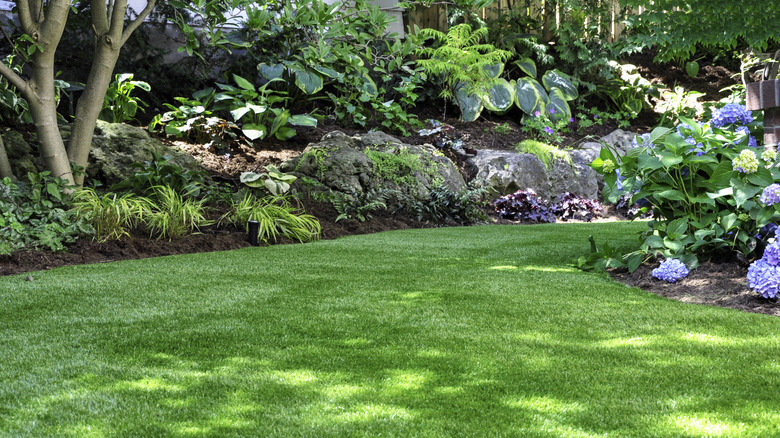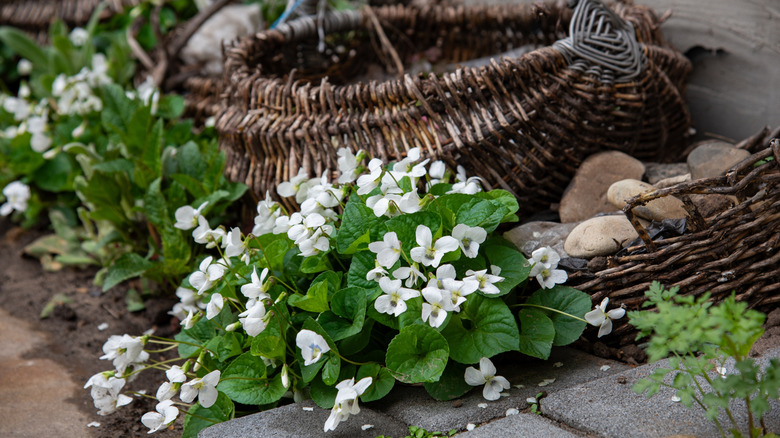Attract Birds And Pollinators With A Ground Cover That Boasts Creamy White Flowers
If attracting more birds and pollinators to your garden is high on your list of priorities, you'll want to grow plants that will lure them in and keep them coming back. Native ground covers are the perfect choice because you can plant them around your existing trees and shrubs and even use them to fill in spaces in your garden beds. A lovely native species you might want to consider is the creamy violet (Viola striata). This pretty clumping plant boasts dainty, creamy white flowers that are just delightful and appear from spring through summer. You'll find that this is one of numerous perennial plants to add to your yard to attract birds year-round.
Creamy violet is a low-growing native plant that spreads by self-seeding rather than runners. The seeds can be spread by ants, birds, and small mammals. One interesting fact about the seeds is that they have a coating that is particularly attractive to ants. These insects will carry the seeds into their nests and either consume the outer coating or feed it to their young. They then take what's left of the still-fertile seeds to their waste disposal area, allowing them to germinate easily. Being native to the eastern states of the U.S., creamy violet will attract a range of butterflies, bees, and skippers with its floral nectar. It's also a host species for the larvae of the Fritillary butterfly. On top of that, birds love to feast on the seed fruits, as do small mammals.
How to grow creamy violet in your garden
If you live anywhere within USDA hardiness zones 3 through 9, you'll be able to add this gorgeous ground cover to your garden. It prefers moist, well-drained soils and, like other violets, grows well in part shade. This makes it ideal for planting under and around trees and taller shrubs. Once planted, this little gem requires minimal care except to provide it with consistent moisture during dry spells. That's why it's such a great ground cover plant for naturalized or woodland gardens because you can just leave it to spread on its own through seed dispersal. You might even want to pair it with some other plants that can grow under deciduous trees with thick roots for a truly magical display of color.
Another enticing feature of creamy violet is that the leaves and blossoms are edible. In fact, the blooms are excellent for making jams, jellies, and candy. This is just another good reason to let wild violets grow in your yard. To get started, you can find seeds readily available if you're planning to mass-plant creamy violet in your yard, or you may also find small plants at wildflower nurseries or those that stock native species.

